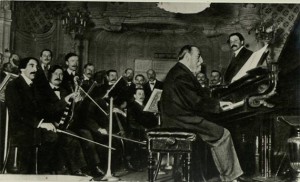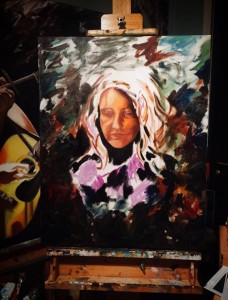The artist locks the door to the atelier, casts lighting upon her easel and a chosen score starts to play. Every work adapts to music’s tone. A mood is set which reflects the artist’s own. A score of tranquil fluidity shall commence, caressing the listener’s ears as paint from canvas drips. Palette knife swishes with scratchy overture. The brush quickly follows, smoothing out life’s messy bits.
Unconcerned with audience or critic’s thoughts, her movement rebels against painted methods from the early years. She doesn’t concern herself with academic applause. She’d rather create from a place that might resonate with another’s thoughts. In this profound state, she exposes contemplations of her own. A meditative place, she often explains, is what each work represents. A painting by definition, to her, serves as nothing less than a representation of oneself, place and mindfulness.
Amid life’s current she swims and sometimes glides. She weathers both light and dark waters and fights against mournful tides. Flying feverishly o’er fields of sienna and violet blue, she reaches for the sliver lining, which seems more a naples yellow hue.
Somber and triumphant are tones enveloped therein. The melodic works of cello and piano paint an elegant duet. Thoughtful meditation turns toward composer, not on canvas but in orchestra. She begins to consider Camille, his life and work. His Animals illustrate his creative struggle, his process and his love. It is The Swan that particularly speaks to her as she works.
Withered autumn leaves and violet butterfly wings tangle in remnants of brown and green. Brushstrokes cascade down, resonating with the depth of cello’s sound. The progression of tradition evolves through both artist’s unconventional work. Each one’ scores reminiscent of times before, influencing others centuries apart.
Transcendent tones speak of things the art spirit feels. When in the depths of creative meditation, the artist can grasp it and feel it.
— Art is Life Expressed — Sarah West —


